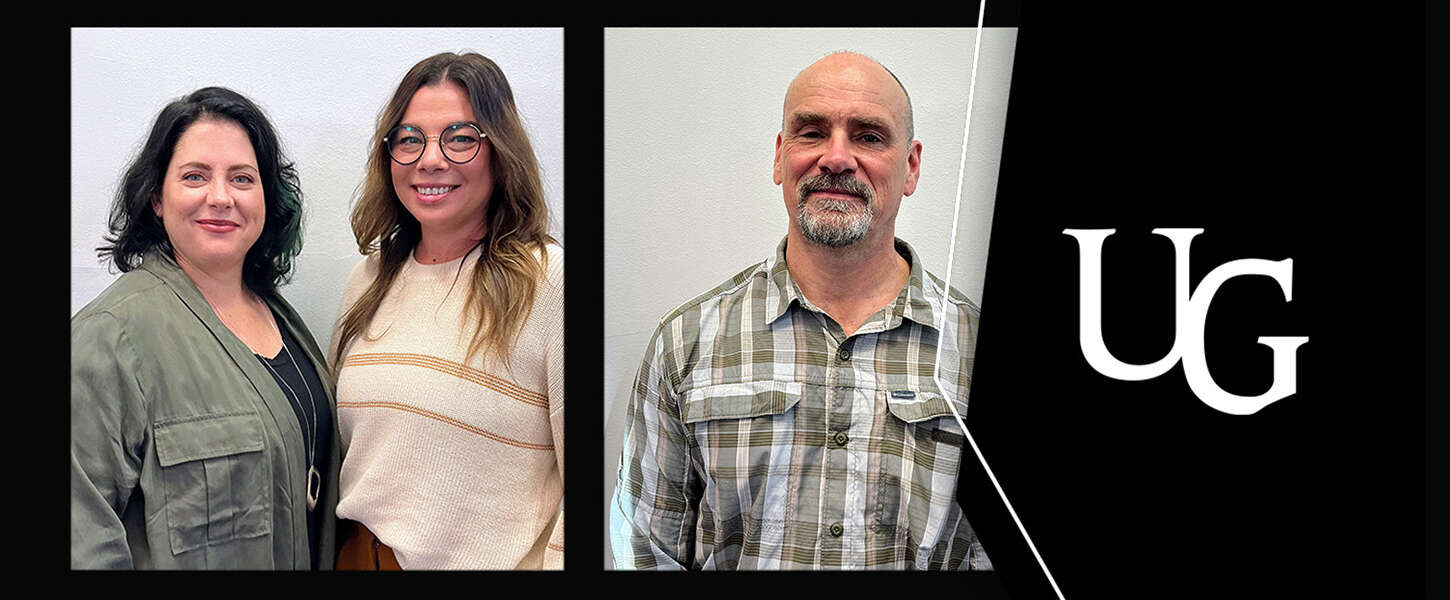Two University of Guelph innovations – one to help protect farmers’ mental health and another to help protect biodiversity – have received the University of Guelph’s Innovation of the Year Award for 2022.
The annual awards from the Office of Research and the Research Innovation Office recognize U of G investigators for creative strategies or products that make a difference in people’s lives.
Drs. Andria Jones-Bitton and Briana Hagen in the Ontario Veterinary College, working with a team of agriculture and mental health stakeholders, designed a mental health literacy program for farmers and the agricultural community.
Dr. Robert Hanner, a professor in the College of Biological Science, and his team developed environmental DNA (or eDNA) biomonitoring methods and tools to monitor at-risk species.
“The University of Guelph’s approach to research and innovation is unique in that it is tied to the betterment of society and improving life,” says Dr. Malcolm Campbell, vice-president (research).
“U of G forms partnerships with communities and the private sector with the goal of finding innovative solutions to solve complex societal issues. These innovations have real-world impact in our community and beyond.”
In the Know
Jones-Bitton, a professor in the Department of Population Medicine, and Hagen, a research scientist in the same department, developed a trilingual mental health literacy training program for farmers and other agricultural workers called In the Know.
The program involves a four-hour, live session, delivered in-person or virtually, to help farmers and other workers identify and understand mental health challenges and to connect people with the appropriate support.
“It is about addressing a recognized need in agriculture,” Jones-Bitton said. “Farmers face occupational stressors that can lead to feelings of helplessness and hopelessness, which can lead to mental illness.”
Begun in fall 2019 with a pilot of about 100 people in Ontario, In the Know is now available Ontario, Manitoba, Nova Scotia, Alberta and British Columbia, and partnership agreements are in the works with Prince Edward Island and Saskatchewan.
“The program is agriculture-specific – it was designed with farmers for farmers and is evidence-based and formally evaluated,” Hagen said. “I think that’s a big reason we had success – it was a partnership from the beginning.”
Jones-Bitton says the program could grow further.
“We’re also engaged in conversations to bring new provinces on board and there’s interest in other countries as well. It’s exciting knowing that we are increasing agricultural community members’ abilities to care for themselves and others.”
Environmental DNA for biomonitoring
Hanner, a professor in the Department of Integrative Biology, developed a laboratory test known as a PCR assay that monitors endangered species by detecting and measuring the environmental DNA they shed.
“Understanding the current distribution of a species is crucial for protecting critical habitat, but conventional aquatic biomonitoring techniques like netting and electrofishing can have negative impacts on the very species we seek to protect,” he says. “Sampling water and testing it for the presence of eDNA is a safe and sensitive method for detecting rare species or those that may be difficult to detect using conventional methods.”
His research has a wide variety of applications, including understanding patterns of habitat use and improving the protection of at-risk species.
“Biomonitoring is necessary for both baseline biodiversity surveys and subsequent environmental effects monitoring programs required for major development projects, creating a business opportunity to develop better methods for detecting aquatic species at risk,” Hanner says. “Biodiversity is in crisis, and we need to do a better job of protecting species at risk.”
Hanner co-founded the start-up company Precision Biomonitoring in 2017 using funding from an NSERC (Natural Sciences and Engineering Research Council) program aimed at commercializing basic research. It provided on-site surveillance and identification of organisms for consulting firms as well as government agencies and resource companies. The start-up recently merged with eDNA company NatureMetrics to become the latter’s North American hub.
“I really attribute the success of the company to the highly qualified personnel involved,” Hanner said. “Dr. Amanda Naaum and Dr. Steven Crookes both worked in my lab at U of G and at Precision Biomonitoring and now work for NatureMetrics.”
